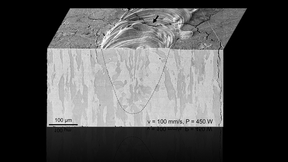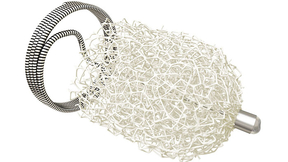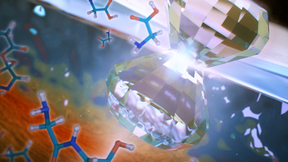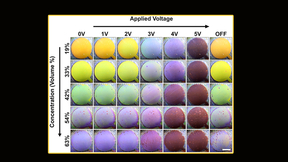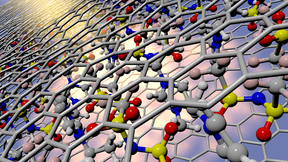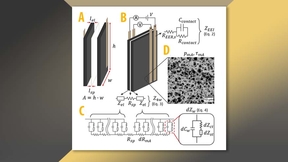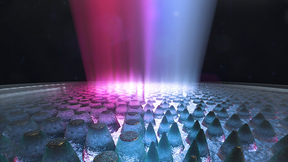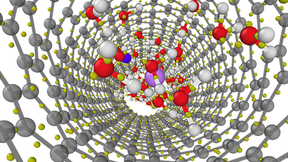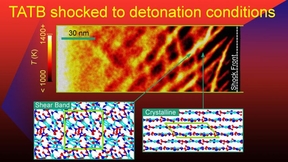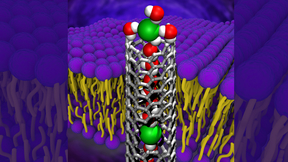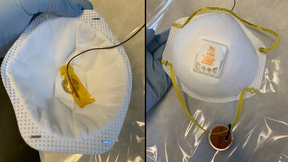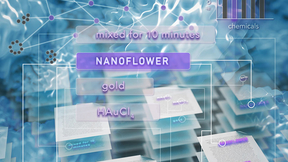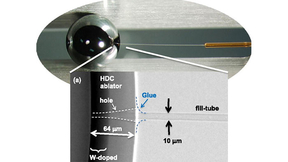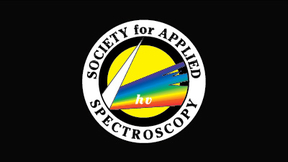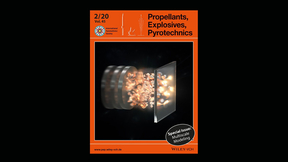Back
Boasting the highest melting and boiling points of all known elements, tungsten has become a popular choice for applications involving extreme temperatures, including lightbulb filaments, arc welding, radiation shielding and, more recently, as plasma-facing material in fusion reactors such as the ITER Tokamak. However, tungsten’s inherent brittleness, and the microcracking…
To optimize catalyst performance, a team of scientists from Lawrence Livermore National Laboratory (LLNL) and collaborators has developed a detailed understanding of the effect of pretreatment-induced nanoscale structural and compositional changes on catalyst activity and long-term stability. The research could make the production of the important industrial feedstock…
The Co-Optima FY19 Year in Review report released by the U.S. Department of Energy (DOE) describes recent accomplishments to improve efficiency while reducing emissions and cost for the entire on-road fleet of combustion-powered vehicles under the Co-Optimization of Fuels & Engines program. Lawrence Livermore National Laboratory (LLNL) is playing a key role in this…
Scientists from Livermore and Texas A&M University, along with California-based startup Shape Memory Medical, Inc., have improved upon existing technologies with the IMPEDE® embolization plug, winner of a 2019 R&D 100 Award.
Massive compressive shearing forces generated by the tidal pull of Jupiter-like planets on their rocky ice-covered moons may form a natural reactor that drives simple amino acids to polymerize into larger compounds. These extreme mechanical forces strongly enhance molecule condensation reactions, opening a new arena of possibilities for the chemical origins of life on…
Today’s low-power, electronic ink displays such as e-book readers produce text through a process called electrophoretic deposition (EPD). Each pixel of the display contains charged black and white particles suspended in a liquid solvent. These particles are moved by electrodes embedded in the devices, causing particles to stick to the electrodes to form words or images…
Mimicking the structure of the kidney, a team of scientists from Lawrence Livermore National Laboratory (LLNL) and the University of Illinois at Chicago (UIC) have created a three-dimensional nanometer (nm)-thin membrane that breaks the permeance-selectivity trade-off of artificial membranes. Highly permeable and selective membranes are useful for a wide range of…
Room temperature ionic liquids (ILs), a special class of molten salts, promise far greater electrochemical performance compared to conventional aqueous solutions due to a suite of novel and tunable properties. Over the past two decades, ILs have been explored as a means of improving a range of different technologies, from energy storage and conversion to catalysis to…
Capacitive deionization (CDI) is an emerging class of water desalination technologies that use cyclic charging and discharging of electrodes to reduce or enrich the salinity of incoming water. The desalination characteristics of CDI are strongly influenced by the resistive components of the system. To better understand this process, a team of Lawrence Livermore National…
LLNL scientists have discovered a new method to add an antireflective metasurface layer on laser optics glass.
Researchers have spent decades studying the properties of water and how they change when there are disruptions to their normal behavior. Research on the topic has a wide range of applications, from biochemical systems to water desalination. A team of scientists from Lawrence Livermore National Laboratory (LLNL), Argonne National Laboratory and the University of Chicago…
Two Lawrence Livermore National Laboratory (LLNL) scientists have discovered a new mechanism for ignition of high explosives that explains the unusual detonation properties of 1,3,5-triamino-2,4,6-trinitrobenzene (TATB). The research will allow for systematic improvements to continuum mechanics models used to assess the performance and safety of the material accurately and…
Lawrence Livermore National Laboratory (LLNL) scientists have taken a step forward in the design of future materials with improved performance by analyzing its microstructure using AI. The work recently appeared online in the journal Computational Materials Science. Technological progress in materials science applications spanning electronic, biomedical, alternate energy,…
Trying to determine how negatively charged ions squeeze through a carbon nanotube 20,000 times smaller than a human hair is no easy feat. Not only did Lawrence Livermore National Laboratory (LLNL) scientists do that but they found that those ions are unexpectedly picky depending on the anion (a negatively charged ion). The research appears in ACS Nano. Inner pores of…
Lawrence Livermore National Laboratory (LLNL) researchers are studying ways to safely and rapidly remove viral threats from N95 respirators, without compromising the device’s fit and its ability to filter airborne particles, so they can be reused. As seen during the COVID-19 pandemic, a shortage of personal protective equipment, including surgical masks and respirators,…
A team of Lawrence Livermore National Laboratory (LLNL) materials and computer scientists developed machine learning tools that extract and structure information from the text and figures of nanomaterials articles using state-of-the-art natural language processing, image analysis, computer vision and visualization techniques. They are applying this technique to COVID-19…
Combining high-fidelity computer simulations with ultra-high-speed X-ray imaging, researchers at Lawrence Livermore National Laboratory (LLNL) have discovered a strategy for reducing or even eliminating defects in parts built through a common, laser-based metal 3D-printing process. In work published by the journal Science, a research team at LLNL, along with collaborators…
The tiny fill-tube used to inject NIF’s high-density carbon capsules with cryogenic fuel is also known to reduce the performance of implosions, and LLNL researchers are exploring several methods that could diminish these negative effects.
Chance Carter (MSD) has been named a fellow for the Society of Applied Spectroscopy (SAS). Fellowship is intended to recognize outstanding members for their service to the society and exceptional contributions to spectroscopy. Chance will be recognized at a special ceremony during SAS’s national meeting in October in Nevada.
A special issue of the journal Propellants, Explosives, Pyrotechnics was recently released that highlights multiscale modeling and experiments, an area of energetic materials science and technology in which LLNL researchers have played a leading role for some time. The issue features the work of MSD’s Keo Springer, Will Bassett, Sorin Bastea, Svjetlana Stekovic,…

